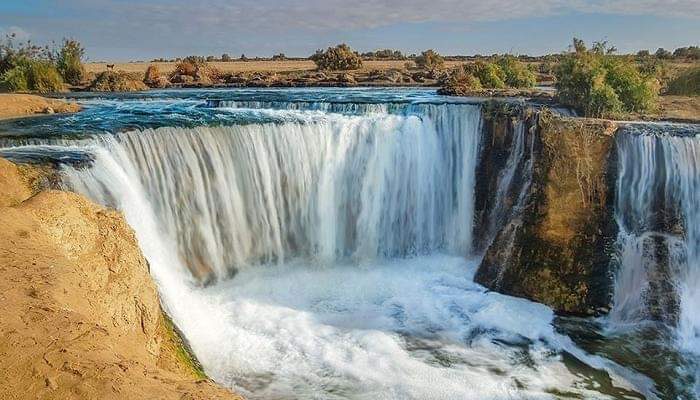Get away from the hustle and bustle of the big city. Enjoy a few moments of calm without tooting and beeping. Go to Wadi el-Rayan for the cawing and cheeping of migrant and stay-at-home fowl.
This is the next best thing to going on safari, and you can fit in some birdwatching, sand skiing, cycling, hiking, freestyle jumping, yoga and meditation. After such a busy schedule, Cairo might offer a welcome break in Geziret el-Qutun (Cotton Island), better known as bed rest. Even so, on this safari you will be unmolested by oversized creatures that stampede, devour smaller animals, and are hypersensitive about territory.
Located 150 kilometres south of Cairo, Wadi El Rayan is one of the Egypt’s most famous nature reserves.
Covering an area of 1,759 square kilometres (roughly half the area of urban Cairo) in the southern part of Fayyoum, this protectorate boasts of many attractions and breathtaking landscape.
Two huge lakes at different elevations create Egypt’s only endless waterfall where they meet. When you stand in front of the waterfalls to snap a selfie, you will feel that the water has no end. When you are waiting for the other couples to snap selfies, the wait feels as if it has no end, either.
Another attraction is the rounded-plateau Mudawara Mountain. If you don’t suffer from pain in your knees, climbing this 45-million-year-old mountain and enjoy the stupendous view from above, then you will might have painful joints and feel 45 million years old the next morning. Meanwhile, watch out for falcons and eagles. Remember, birds of prey sense when a creature is weak and vulnerable.
The mountain is much older than your mother-in-law as it was formed in Eocene Period, which lasted from 56 to 33.9 million years ago. The entire area was exposed to wind erosion which formed the mountain and shaped its surroundings. Dunes were also formed and caused the removal of the surface formations, leaving the remains of animals littered above.
After your descent from the mountain, you may need a rest (and/or a wheelchair) before you resume your exploration of this fascinating area. The Magic Lake is surrounded by dunes and changes colour many times in a day depending on the amount of sunlight. You can go for a swim or just enjoy the surrounding desert with a spot sand boarding.
Wadi Hitan (Valley of Whales) offers another interesting adventure in Wadi Rayan. This fossil area dates back to 40 million years and there you will find hundreds of whale fossils in the ground along with shells and shark teeth. UNESCO listed Wadi Hitan as a World Heritage Site in 2005.
The birds accompany you everywhere you go into the reserve. They are after your sandwiches, but they also linger by the lakes or enjoy the sunlight on the land.
The stunning el-Rayan springs are south of the lower lake. This 150-square-kilometre area consists of long, dense and moving dunes and four sulfur springs — a draw for curative and therapeutic tourism and just the place to soothe your aching joints after cavorting around on Mudawara Mountain.
Walking barefoot on the dunes also helps your body relax and recharge so that you can brace yourself for the stress of the working week.
If you are fond of watching animals, you will find deer, wolves, red foxes, and the fiery white deer, which is an endangered species. The area also contains about sixteen species of reptiles, none of which is poisonous, so you will not join the ranks of endangered species.
Since it was declared as a protected area in 1989, the Wadi el-Rayan has been billed as a resort for tired souls.






Discussion about this post